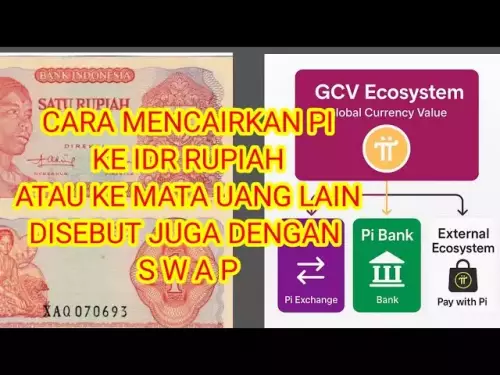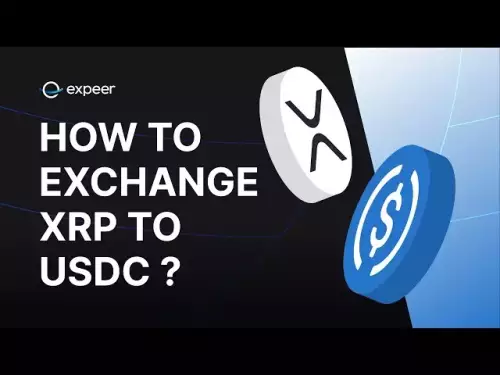-
 bitcoin
bitcoin $112715.707551 USD
-1.71% -
 ethereum
ethereum $4101.475385 USD
-3.01% -
 tether
tether $1.000644 USD
-0.02% -
 bnb
bnb $1207.619465 USD
-6.77% -
 xrp
xrp $2.501451 USD
-3.98% -
 solana
solana $202.947124 USD
-3.32% -
 usd-coin
usd-coin $1.000295 USD
0.04% -
 dogecoin
dogecoin $0.203884 USD
-4.47% -
 tron
tron $0.317154 USD
-1.72% -
 cardano
cardano $0.695009 USD
-4.43% -
 hyperliquid
hyperliquid $38.853961 USD
-8.23% -
 chainlink
chainlink $18.988674 USD
-4.64% -
 ethena-usde
ethena-usde $1.000233 USD
-0.03% -
 stellar
stellar $0.337050 USD
-3.63% -
 bitcoin-cash
bitcoin-cash $536.861728 USD
-1.28%
What to do if HBAR falls below the support level? Should I stop loss or cover the position?
If HBAR falls below support, investors must choose between setting a stop loss to limit losses or covering their position, hoping for a rebound, based on market analysis and risk tolerance.
Apr 29, 2025 at 04:49 pm

If HBAR falls below its support level, investors face a critical decision: whether to implement a stop loss or to cover their position. This decision can significantly impact their investment outcomes. Understanding the implications of each strategy and the factors to consider can help in making an informed choice.
Understanding Support Levels and Their Importance
Support levels are key price points where a cryptocurrency, in this case, HBAR, tends to find buying interest, preventing it from falling further. When HBAR falls below a support level, it often indicates a shift in market sentiment, potentially leading to further declines. Recognizing this, investors must assess whether the breach is a temporary dip or a sign of a more significant trend.
Evaluating the Decision to Stop Loss
A stop loss is a pre-determined point at which an investor sells an asset to limit losses. If HBAR falls below its support level, setting a stop loss can help protect your investment from further declines. To implement a stop loss, follow these steps:
- Determine the stop loss level: Based on your risk tolerance and the support level breached, decide the price at which you want to sell HBAR.
- Set the stop loss order: Use your trading platform to set a stop loss order at the chosen price. This can usually be done through the order entry interface.
- Monitor the market: Keep an eye on HBAR's price movements to ensure your stop loss order is executed if the price hits your set level.
The advantage of a stop loss is that it automates the selling process, helping to manage risk without needing constant monitoring. However, if the price quickly rebounds after hitting your stop loss, you might miss out on potential gains.
Considering the Option to Cover the Position
Covering the position involves buying more HBAR to average down your cost basis, hoping for a price recovery. This strategy can be riskier but might be suitable if you believe in HBAR's long-term potential. To cover your position, consider these steps:
- Assess your belief in HBAR: Evaluate whether you still have confidence in HBAR's fundamentals and future prospects.
- Calculate the new cost basis: Determine how many additional HBAR you need to buy to achieve your desired average cost.
- Execute the purchase: Use your trading platform to buy the calculated amount of HBAR at the current market price.
- Monitor the investment: Continuously track HBAR's price and market trends to decide when to sell for a profit or cut losses.
Covering the position can be beneficial if HBAR rebounds, but it also increases your exposure to potential further declines.
Analyzing Market Conditions and Technical Indicators
Before deciding between a stop loss and covering the position, it's crucial to analyze market conditions and technical indicators. Look at factors such as trading volume, market sentiment, and other cryptocurrencies' performance. Technical indicators like moving averages, RSI (Relative Strength Index), and MACD (Moving Average Convergence Divergence) can provide insights into HBAR's price momentum and potential reversal points.
- Volume analysis: High trading volume during a support breach might indicate strong selling pressure, suggesting a stop loss might be appropriate.
- Sentiment analysis: Negative news or market sentiment could reinforce the decision to stop loss, while positive developments might support covering the position.
- Technical indicators: If indicators suggest HBAR is oversold, covering the position might be more favorable; if they indicate continued downward momentum, a stop loss could be safer.
Assessing Personal Risk Tolerance and Investment Goals
Your risk tolerance and investment goals play a significant role in deciding whether to stop loss or cover the position. If you have a low risk tolerance and are primarily focused on preserving capital, a stop loss might be more suitable. Conversely, if you are willing to take on more risk for potential higher returns and believe in HBAR's long-term value, covering the position could be a better strategy.
- Risk tolerance: Evaluate how much financial loss you can comfortably withstand without affecting your overall financial stability.
- Investment goals: Consider whether your goal is short-term trading or long-term investment. Short-term traders might lean towards stop loss, while long-term investors might prefer covering the position.
Consulting with Financial Advisors and Community Insights
Seeking advice from financial advisors and engaging with the cryptocurrency community can provide additional perspectives on whether to stop loss or cover the position. Financial advisors can offer personalized guidance based on your financial situation, while community insights can highlight trends and sentiments not immediately apparent from market data.
- Financial advisors: Discuss your situation with a professional to get tailored advice on managing your HBAR investment.
- Community insights: Participate in forums, social media groups, and online communities dedicated to HBAR and cryptocurrency to gather diverse opinions and experiences.
Frequently Asked Questions
Q: How can I identify a false breakout in HBAR's price?A: A false breakout occurs when HBAR briefly falls below a support level but quickly rebounds. To identify a false breakout, look for signs such as low trading volume during the breach, a quick return above the support level, and bullish technical indicators like an RSI that remains above 30.
Q: What are the tax implications of using a stop loss on HBAR?A: The tax implications of using a stop loss on HBAR depend on your jurisdiction. Generally, selling HBAR at a loss could allow you to claim a capital loss, which might offset capital gains from other investments. However, tax laws vary, so consult a tax professional for specific advice.
Q: Can I set a trailing stop loss for HBAR, and how does it work?A: Yes, you can set a trailing stop loss for HBAR. A trailing stop loss adjusts the stop price at a fixed percentage or dollar amount below the market price as it rises. If HBAR's price falls by the set amount, the stop loss order is triggered. To set a trailing stop loss, use your trading platform's order entry interface and select the trailing stop loss option, specifying the desired trail amount.
Q: How does the overall market sentiment affect the decision to stop loss or cover the position with HBAR?A: Overall market sentiment can significantly influence your decision. If the broader cryptocurrency market is experiencing a bearish trend, it might be safer to use a stop loss to protect your investment from further declines. Conversely, if the market sentiment is bullish, covering the position might be more advantageous, as HBAR could benefit from the positive market environment.
Disclaimer:info@kdj.com
The information provided is not trading advice. kdj.com does not assume any responsibility for any investments made based on the information provided in this article. Cryptocurrencies are highly volatile and it is highly recommended that you invest with caution after thorough research!
If you believe that the content used on this website infringes your copyright, please contact us immediately (info@kdj.com) and we will delete it promptly.
- Tokenization Takes Center Stage: SEC-Registered Stock Tokens Reshape Finance
- 2025-10-15 22:25:13
- Bitcoin Seized, Transferred: A New York Minute on Crypto's Wild Ride
- 2025-10-15 22:25:13
- Milk & Mocha's $HUGS: Can This Crypto Presale Deliver a 100x Portfolio?
- 2025-10-15 22:30:01
- Memecoins Grow Up: $HUGS Presale Offers Real Utility
- 2025-10-15 22:45:13
- HUGS Launch, Crypto Bull Run, and a Perfect Storm Brewing?
- 2025-10-15 22:45:13
- Zero Knowledge Proof, Whitelists, and the Future of Blockchain Privacy
- 2025-10-15 22:30:01
Related knowledge

Practical parameter settings for a Bitcoin multi-timeframe moving average system
Sep 18,2025 at 10:54pm
Optimizing Timeframe Combinations for Bitcoin Trading1. Selecting appropriate timeframes is crucial when building a multi-timeframe moving average sys...

How can I filter out false breakouts in Dogecoin high-frequency trading?
Sep 22,2025 at 01:00am
Understanding False Breakouts in Dogecoin Trading1. A false breakout occurs when Dogecoin's price appears to move beyond a defined support or resistan...

Techniques for identifying tops and bottoms in the Bitcoin on-chain NVT model
Sep 20,2025 at 07:54pm
Understanding the NVT Model in Bitcoin Analysis1. The Network Value to Transactions (NVT) ratio is often described as the 'P/E ratio' of the cryptocur...

What does the surge in open interest in Bitcoincoin futures mean?
Sep 20,2025 at 11:18pm
Understanding the Surge in Dogecoin Futures Open Interest1. A surge in open interest within Dogecoin futures indicates a growing number of active cont...

How can I use the Ethereum USDT premium to gauge market sentiment?
Sep 18,2025 at 11:55pm
Understanding the Ethereum USDT Premium1. The Ethereum USDT premium refers to the price difference between USDT (Tether) traded on Ethereum-based plat...

What should I do if Ethereum staking yields decline?
Sep 20,2025 at 06:18am
Understanding the Causes Behind Declining Ethereum Staking Yields1. The Ethereum network transitioned to a proof-of-stake consensus mechanism with the...

Practical parameter settings for a Bitcoin multi-timeframe moving average system
Sep 18,2025 at 10:54pm
Optimizing Timeframe Combinations for Bitcoin Trading1. Selecting appropriate timeframes is crucial when building a multi-timeframe moving average sys...

How can I filter out false breakouts in Dogecoin high-frequency trading?
Sep 22,2025 at 01:00am
Understanding False Breakouts in Dogecoin Trading1. A false breakout occurs when Dogecoin's price appears to move beyond a defined support or resistan...

Techniques for identifying tops and bottoms in the Bitcoin on-chain NVT model
Sep 20,2025 at 07:54pm
Understanding the NVT Model in Bitcoin Analysis1. The Network Value to Transactions (NVT) ratio is often described as the 'P/E ratio' of the cryptocur...

What does the surge in open interest in Bitcoincoin futures mean?
Sep 20,2025 at 11:18pm
Understanding the Surge in Dogecoin Futures Open Interest1. A surge in open interest within Dogecoin futures indicates a growing number of active cont...

How can I use the Ethereum USDT premium to gauge market sentiment?
Sep 18,2025 at 11:55pm
Understanding the Ethereum USDT Premium1. The Ethereum USDT premium refers to the price difference between USDT (Tether) traded on Ethereum-based plat...

What should I do if Ethereum staking yields decline?
Sep 20,2025 at 06:18am
Understanding the Causes Behind Declining Ethereum Staking Yields1. The Ethereum network transitioned to a proof-of-stake consensus mechanism with the...
See all articles










































































